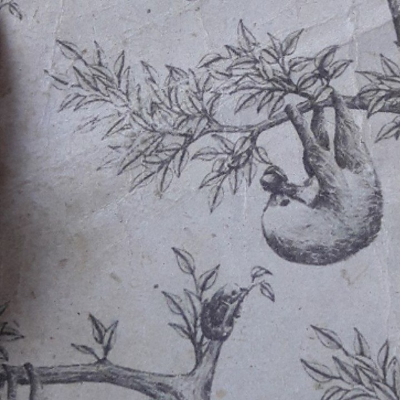
Welcome to the 4th ForgeFed demo! These instructions demonstrate opening and merging a Federated Merge Request.
(0) Intro
Going through these instructions may require some basic familiarity with Git repositories and the basic Merge Request workflow.
- Forge
- A website where people host their (mostly software) projects and collborate on them together
- Forge software
- Software used to run a forge website; for example, the Gitea software powers the Codeberg website, the GitLab CE software powers the Framagit website, the Sourcehut software powers the sr.ht website
- Federation
- The ability of people using different websites to interact with each other as if they were using the same website, because the websites have a common communication language/protocol using which they talk to each other, thus forming a decentralized network of websites and people
- Instance
- A website powered by some specific web server software; e.g. Codeberg is a Gitea instance, floss.social is a Mastodon instance
- Forge Federation
- A network of federated connected forges, where people on different forges can freely collaborate on projects, and people can host projects on any forge of their choice, including self-hosting their own forge
- ForgeFed
- A common language for forges to communicate and federate, an extension of the ActivityPub federation protocol
- Vervis
- Pre-alpha under-construction experimental forge software, used for demonstration, development and experimentation of forge federation using ForgeFed, and as a reference implementation for other forge software to test against
What’s in this demo
In this demo, you can create a Git repository on a Vervis instance, and then open a merge request from a fork you create on another Vervis instance.
Previous demos
I mentioned it’s the “4th demo”, so you may wonder where the previous 3 demos are! The information in them is outdated, but for the very curious, here they are:
- Demo 1, Federated ticket comments, 2019
- Demo 2, Federated opening of new tickets, July 2019, archived on the wayback machine
- Demo 3, Push activities and repo following, November 2019, archived on the wayback machine
(1) Setup
On your computer, generate an SSH key to use for pushing Git commits:
ssh-keygen -t rsa -f ./vervis-demo-key
Tech note: Only RSA keys work at the moment, it won't work with Ed25519 keys or anything else
Add the following to your ~/.ssh/config:
Host fig.fr33domlover.site
Port 5022
ControlMaster no
ForwardAgent no
ForwardX11 no
IdentityFile ~/vervis-demo-key
KexAlgorithms +diffie-hellman-group1-sha1
Ciphers aes128-ctr,aes192-ctr,aes256-ctr,aes128-cbc,3des-cbc
Host grape.fr33domlover.site
Port 6022
ControlMaster no
ForwardAgent no
ForwardX11 no
IdentityFile ~/vervis-demo-key
KexAlgorithms +diffie-hellman-group1-sha1
Ciphers aes128-ctr,aes192-ctr,aes256-ctr,aes128-cbc,3des-cbc
Host walnut.fr33domlover.site
Port 7022
ControlMaster no
ForwardAgent no
ForwardX11 no
IdentityFile ~/vervis-demo-key
KexAlgorithms +diffie-hellman-group1-sha1
Ciphers aes128-ctr,aes192-ctr,aes256-ctr,aes128-cbc,3des-cbc
Those SSH config sections are needed because the Vervis instances don't use the standard SSH port 22, but also because the SSH server component is a bit outdated ![]()
(2) Create a project
Create an account on the fig.fr33domlover.site Vervis instance.
Once you’ve verified your email address and logged in, the homepage will have an SSH key settings link. Upload your public key, i.e. the vervis-demo-key.pub file.
Back on the homepage, there’s a Create a new repository link. Create a Git repository.
Darcs repos are supported by Vervis as well, but at the moment this demo fully works only with Git repos
Back on the homepage, there’s a Create a new patch tracker link. You’ll be asked to pick a repo. Pick the repo you just created.
Back on the homepage, there’s a list of your repos. Go to the repo you created. You’ll see a message about the new Patch Tracker. Click the Link button.
On your computer, create a Git repo and add some content:
git init --initial-branch=main vervis-demo-repo
cd vervis-demo-repo
echo "Hello world!" > file.md
git add file.md
git commit --message="Write some awesome text"
Push the commit(s). Grab the SSH push URL from the repo’s page on Vervis. Reminder, the homepage has a list of your repos.
git push --set-upstream LOGIN@fig.fr33domlover.site:REPOCODE main
You can keep the terminal open, we’ll use it again in a bit.
(3) Create a fork
Create an account on the grape.fr33domlover.site Vervis instance.
Once you’ve verified your email address and logged in, the homepage will have an SSH key settings link. Upload your public key, i.e. the vervis-demo-key.pub file.
Back on the homepage, there’s a Create a new repository link. Create a Git repository.
On your computer, make some more commits in the local repo you created:
echo "Have you tried the cool ForgeFed demo yet?" >> file.md
git add file.md
git commit --message="Add more cool content"
Push the new commit(s) to the new repo you just created on the grape instance. The repo’s page on Vervis has the SSH push URL.
git remote add fork LOGIN@grape.fr33domlover.site:OTHERCODE
git push fork main
(4) Open a merge request
Create an account on the walnut.fr33domlover.site Vervis instance.
Once you’ve verified your email address and logged in, the homepage should have an Open a merge request link. Specify the fig patch tracker URL, its repo’s page URL as the target, and the grape repo’s URL as the origin. If you followed the above instructions, both origin and target branches are main. Reminder, the homepages have lists your repos and patch trackers.
Tracker https://fig.fr33domlover.site/looms/...
Target Repo https://fig.fr33domlover.site/repos/...
Target branch main
Origin Repo https://grape.fr33domlover.site/repos/...
Origin branch main
On Vervis, the terms "Merge Request", "Pull Request" and "Patch" mean almost the same thing, and are often interchangeable.
After submitting the form, on the link bar at the top of the page there’s an “outbox” link. There you’ll see a list of scary looking JSON objects ![]() make sure the first one is from a few seconds ago.
make sure the first one is from a few seconds ago.
Now go back to the fig instance. The homepage should have a link to your Patch Tracker, and there you’ll see the new Merge Request you opened. Under “Bundle … patches” there’s list the commits in the MR, available to view as Git patches.
(5) Merge the merge request
On the MR’s page (under the Patch Tracker on the fig instance), there’s an Apply button. Hopefully the the status says “Can apply” ![]() Good luck!
Good luck!
Once the MR is successfuly applied, go to the repo’s page, click Commits and notice that the fork’s commits have been merged into the upstream repo.
End of demo!
Have fun ![]()
– The ForgeFed team
(A) Authors
Written by: fr33domlover
Edited by: Loïc Dachary loic@dachary.org
(B) Some notes
- We did some testing, but there may still be bugs and mistakes! If anything is confusing or fails or you have questions or comments, come talk with us!

- Comment on the Fediverse
- IRC channel:
#forgefedon Libera Chat - Matrix room
(Photo: Pathway Surrounded By Fir Trees by James Wheeler)

Written by fr33domlover
ForgeFed team member and maintainer of Vervis.